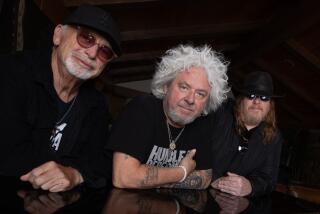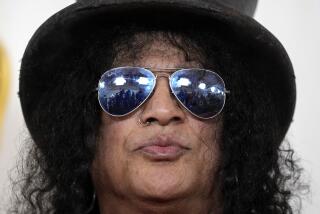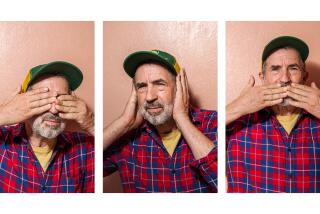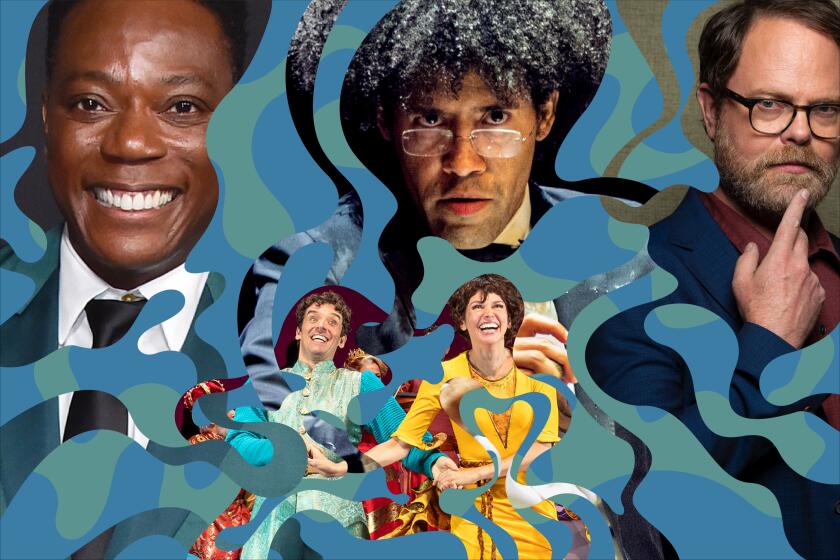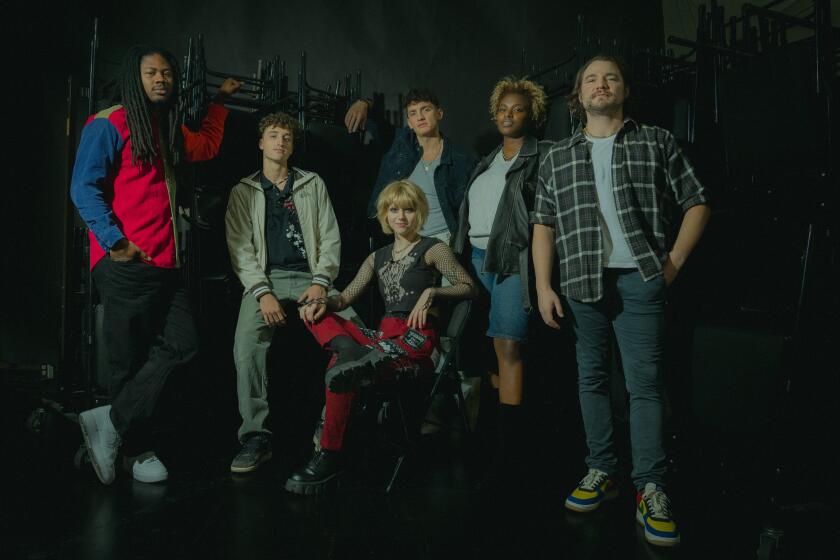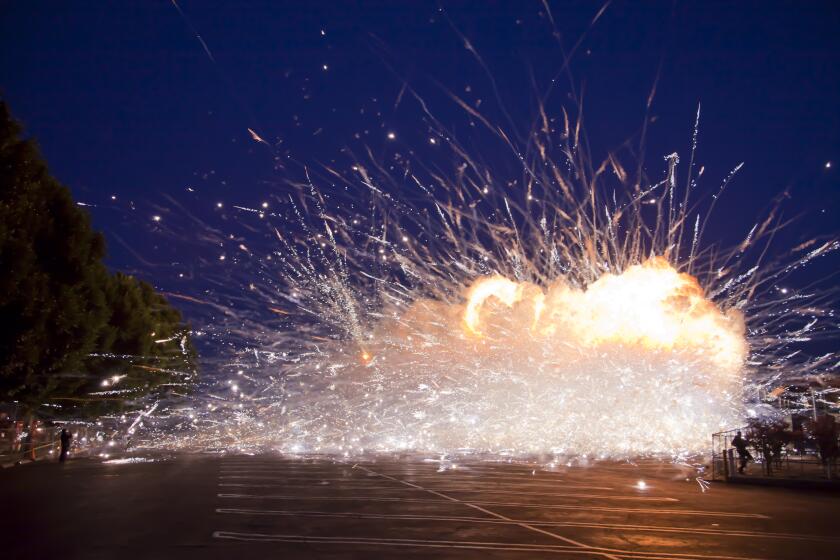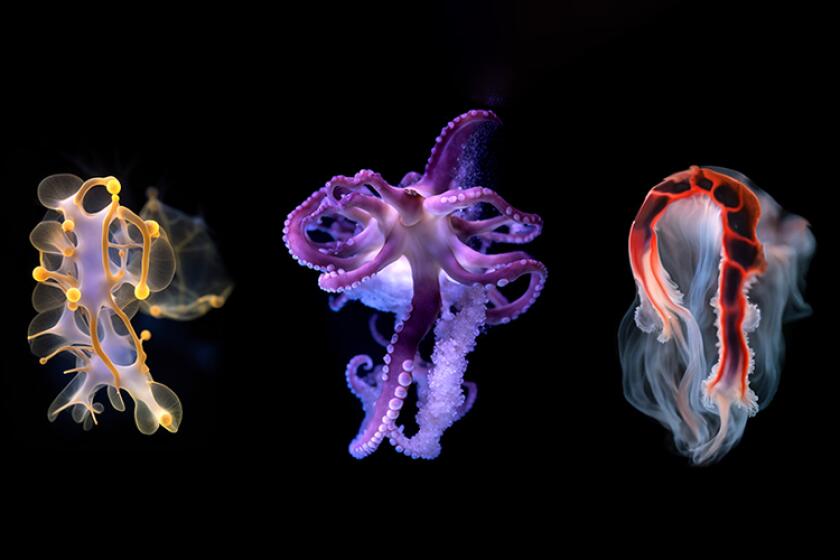HEARTS ON FIRE : Grass-Roots Chicano and Mexican Groups Channel Separate Passions Into Equally Charged Works
A world where people’s hearts are literally on fire, where eye-popping patterns take a living room hostage and the skies routinely open to reveal images of martyrdom--that’s the charged environment of the paintings and prints of Chicano artists of East Los Angeles who are members of a community outreach group called Self-Help Graphics.
A selection of their work is at the Laguna Art Museum (through Nov. 12), along with a more soberly passionate group of prints (through Nov. 3) from the early days of El Taller de Grafica Popular or Workshop for Popular Graphics. Founded in Mexico City in 1937, El Taller had both Mexican and American artist members, three of whom spent time in Los Angeles during the 1930s and ‘40s.
Both the Self-Help and El Taller groups represent grass-roots approaches toward involving people of modest means in art. Self-Help helps artists help themselves by giving them access to a master printer and a silk-screen studio. El Taller reached out to the masses by publishing prints with a broad appeal and making them widely available at low prices. (One series distributed in the United States in 1946 sold for $5 apiece.)
But work by artists of the two groups understandably has few similarities in style or subject matter. With some notable exceptions, the flamboyant contemporary Chicano work--made by painters fond of high-keyed color and bold brushwork--is expressive of mostly personal emotion--sexual innuendo, jaded social experience, the loss or reaffirmation of religious faith, the probing of self-identity. The social activist printmakers of Mexico, on the other hand, made sober, linear images in black and white that served as wordless editorials, reaching out to the masses to document instances of political repression and to trumpet victories of the Mexican Revolution.
Among the El Taller group, Leopoldo Mendez and Elizabeth Catlett, a black American, stand out for their strong, easily read images. In a linoleum print, “La Venganca del Pueblo” (Vengeance of the People) from 1942, Mendez contrasts German soldiers strangling infants with a passionate man wielding an ax. Superimposed over his leg, as if in a cinematic montage, are the tiny images of a hanging man, a village in flames, massed soldiers and dead bodies.
In her linoleum print of 1946, “And a Special Fear for My Loved Ones,” Catlett shows the body of a black man with a rope around his neck lying on the ground, palm up in surrender. A row of men’s boots--not a helpful hand or grieving face in sight--suggests the cold indifference of the men who strung him up and cut him down.
One major failing of the show, however, is its lack of background on just what was happening in Mexico during the years the El Taller artists were working. As the wall text in the show explains, the workshop was founded under the term of Socialist President Lazaro Cardenas, who supported many of the goals of the Mexican Revolution.
But what were these goals, exactly? And--given the political slant of the art--shouldn’t we know something about Cardenas’s land reforms and his all-important nationalization of the petroleum industry? Prints in the show are dated as late as 1948, eight years after the general left office, so it also would be helpful to know something about the policies of his successors. For example, there may have been a particular reason why artist Raul Anguiano was moved to make a lithograph of a lime kiln in which two workers are dwarfed by huge funnels of smoke.
The mural painting backgrounds of some of the Self-Help artists come through clearly in the sheer theatricality of images with imposingly large figures and exaggerated perspectives (objects often seem to hurl or twist through space). But the stronger work either adds a personal twist to the familiar folk cliches of roses, hearts, tears, tattoos, Madonnas, ruby red lips and tasseled curtains, or looks elsewhere (to ancient myth, in a painting by Arturo Urista) for usable imagery.
In his painting, “Poder” (Power), Alfredo de Batuc conjures up a vision of a stern-faced but soigne fellow in evening clothes and a trench coat--presumably with asbestos coating--who ostentatiously sports a flaming heart. De Batuc may be suggesting we are looking to the wrong people as latter-day saviors.
Frank Romero’s prints vibrate with fat, fast-moving brush strokes. In his nostalgic “Frutas y Venduras” (Fruits and Vegetables), a “skeletal” produce truck--the strokes that sketch it each float independently in space--seems to ride on the tips of the tall grass past isolated pockets of trees.
Barbara Carrasco’s cool, poster-like paintings and serigraphs instantly telegraph their point. In “Names Can Hurt,” she paints herself--surrounded by racial designations and attributes--with skin that peels off decoratively into brown and pink layers.
What: “El Taller de Grafica Popular: Mexican Workshop for Popular Graphic Art, 1937-1949” and “ ‘Self-Help’ Artists: Painting and Printmaking in East L.A.”
When: 11 a.m. to 5 p.m. daily; “El Taller” through Nov. 3; “Self-Help” through Nov. 12.
Where: Laguna Art Museum, 307 Cliff Drive, Laguna Beach.
Whereabouts: The museum is at the corner of Cliff Drive and North Coast Highway, just up the coast from the PCH intersection with Laguna Canyon Road.
Wherewithal: New admission prices: $3 general, $1.50 for students and seniors, free for children under 12.
Where to call: (714) 494-6531.
More to Read
The biggest entertainment stories
Get our big stories about Hollywood, film, television, music, arts, culture and more right in your inbox as soon as they publish.
You may occasionally receive promotional content from the Los Angeles Times.
